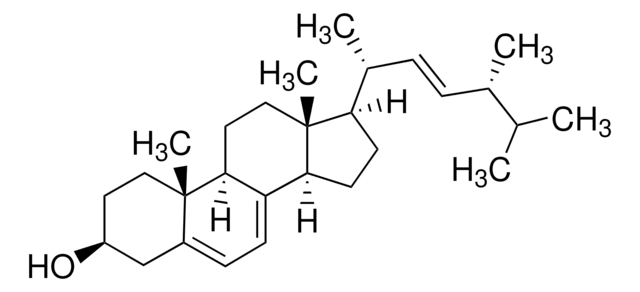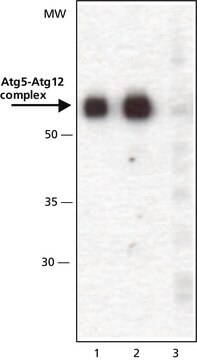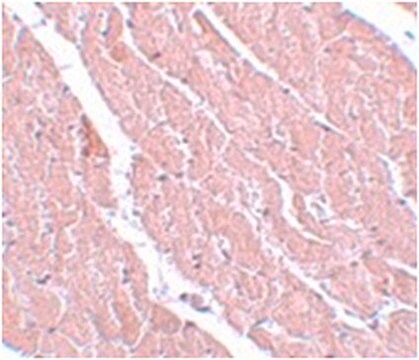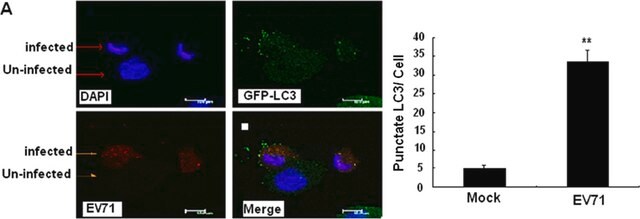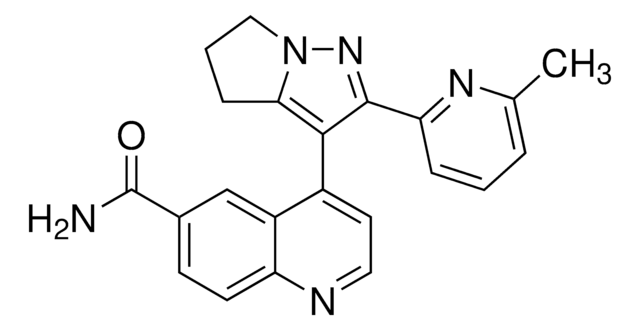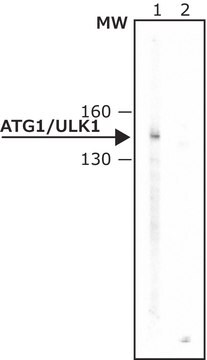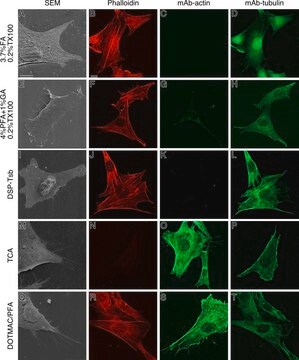A0856
Anti-ATG5 (N-terminal) antibody produced in rabbit
affinity isolated antibody, PBS solution
Synonim(y):
Przeciwciało ATG5 - przeciwciało anty-ATG5 (N-końcowe) produkowane u królików, Przeciwciało Atg5
About This Item
Polecane produkty
pochodzenie biologiczne
rabbit
białko sprzężone
unconjugated
forma przeciwciała
affinity isolated antibody
rodzaj przeciwciała
primary antibodies
klon
polyclonal
Formularz
PBS solution
masa cząsteczkowa
antigen ~56 kDa (Atg5-Atg12 complex)
reaktywność gatunkowa
mouse, human, rat
opakowanie
antibody small pack of 25 μL
metody
immunofluorescence: suitable
western blot: 0.5-1 μg/mL using whole extracts of human K562, rat NRK, and mouse 3T3 cells
numer dostępu UniProt
Warunki transportu
dry ice
temp. przechowywania
−20°C
docelowa modyfikacja potranslacyjna
unmodified
informacje o genach
human ... ATG5(9474)
mouse ... Atg5(11793)
rat ... Atg5(365601)
Powiązane kategorie
Specyficzność
Immunogen
Zastosowanie
- in immunoblotting
- in immunofluorescence
- in western blotting
Western Blotting (1 paper)
Działania biochem./fizjol.
Postać fizyczna
Oświadczenie o zrzeczeniu się odpowiedzialności
Nie możesz znaleźć właściwego produktu?
Wypróbuj nasz Narzędzie selektora produktów.
polecane
produkt powiązany
Kod klasy składowania
10 - Combustible liquids
Klasa zagrożenia wodnego (WGK)
WGK 3
Temperatura zapłonu (°F)
Not applicable
Temperatura zapłonu (°C)
Not applicable
Środki ochrony indywidualnej
Eyeshields, Gloves, multi-purpose combination respirator cartridge (US)
Wybierz jedną z najnowszych wersji:
Masz już ten produkt?
Dokumenty związane z niedawno zakupionymi produktami zostały zamieszczone w Bibliotece dokumentów.
Klienci oglądali również te produkty
Nasz zespół naukowców ma doświadczenie we wszystkich obszarach badań, w tym w naukach przyrodniczych, materiałoznawstwie, syntezie chemicznej, chromatografii, analityce i wielu innych dziedzinach.
Skontaktuj się z zespołem ds. pomocy technicznej